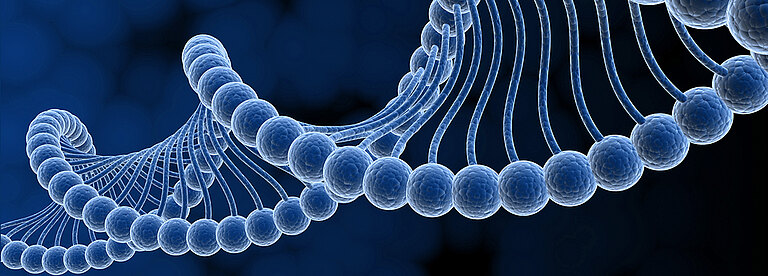With these words, the Royal Swedish Academy of Sciences yesterday awarded the Nobel Prize in Chemistry 2020 to the French scientist and Director at the Max Planck Institute in Berlin, Emmanuelle Charpentier, and her U.S.-colleague Jennifer A. Doudna from the University of Berkeley.
Only eight years ago, on June 28, 2012, a team of researchers led by Doudna and Charpentier published a groundbreaking article in the renowned journal Science presenting the molecular machinery of the so-called “CRISPR/Cas9 gene scissors”:
“We identify a DNA interference mechanism involving a dual-RNA structure that directs a Cas9 endonuclease to introduce site-specific double-stranded breaks in target DNA.“
Doudna and Charpentier demonstrated that the bacterial endonuclease Cas9 can be programmed by a crRNA:trRNA dual or chimeric RNA construct for site-specific DNA cleavage of any DNA target sequence. They also immediately realized the potential to exploit the new CRISPR/Cas system for RNA-programmable genome editing in eukaryotes and higher organisms. It was this foundational publication that kickstarted all subsequent research in the area of CRISPR/Cas-mediated genome engineering. The comet-like rise of the CRISPR/Cas9 technology in science and industry had begun.
Previously available gene scissors such as Zinc-finger nucleases (ZFNs) or transcription-activator–like effector nucleases (TALENs) were significantly more cumbersome to design and program and therefore readily outperformed by CRISPR/Cas. It was immediately clear that Doudna and Charpentier’s CRISPR/Cas technology had the potential to revolutionize the field of genome engineering and human health. Years later, the potential uses of the CRISPR/Cas technology in medicine, industrial biotechnology, and agriculture are still overwhelming.
“I am especially pleased to see a team of two women scientists winning the Nobel Prize for Chemistry, setting a great example for female and transatlantic collaboration”, says Dr. Natalie Kirchhofer, partner and patent attorney at Cohausz & Florack. Up to this year’s awards, there were only 5 women among the 185 Nobel Prize laureates for Chemistry. This includes Marie Curie in 1911 and her daughter Irène Joliot-Curie in 1935 for their research on radioactivity, Dorothy Crowfoot Hodgkin in 1964 for her work on protein X-ray crystallography, Ada Yonath in 2009 for her work on ribosomes, and Frances Arnold in 2018 for her work on the directed evolution of enzymes. “Nobel laureates are important role models and I hope that this year’s prize helps to encourage even more girls and women in their pursuit of scientific careers and in their ambitions to become inventors, an area in which women are still underrepresented”, says Dr. Kirchhofer.
Notably, The Royal Swedish Academy of Sciences limited the Nobel Prize for the CRISPR/Cas9 technology to Doudna and Charpentier. Other scientists, including Feng Zhang from the Massachusetts Institute of Technology, who was among the first to apply the CRISPR/Cas9 technology to human cells, were not included. Zhang not only leads in citations on the CRISPR/Cas9 technology, but also features as the most prominent competitor of the two Nobel Prize winners in a still ongoing worldwide patent dispute of unprecedented dimensions. “Not only from our involvement in the CRISPR/Cas patent battles, it is satisfying to see that these women's groundbreaking research results and proof-of-concept were recognized, and not the subsequent first-time-in-human-cells applications by others”, says Dr. Kirchhofer. This year’s Nobel Prize decision has - at least psychologically - a potential impact on the ongoing CRISPR patent disputes in Europe and the rest of the world, perhaps also presenting a window of opportunity for a comprehensive CRISPR patent pool and settlement talks.
Picture credits: Olkesandr – AdobeStock.com

![[Translate to Englisch:] [Translate to Englisch:]](/fileadmin/_processed_/1/9/csm_Jennifer_Doudna_and_Emmanuelle_Charpentier_win_the_2020_Nobel_Prize_in_Chemistry_for_CRISPR_Cas_62c2f73dcd.jpg)


